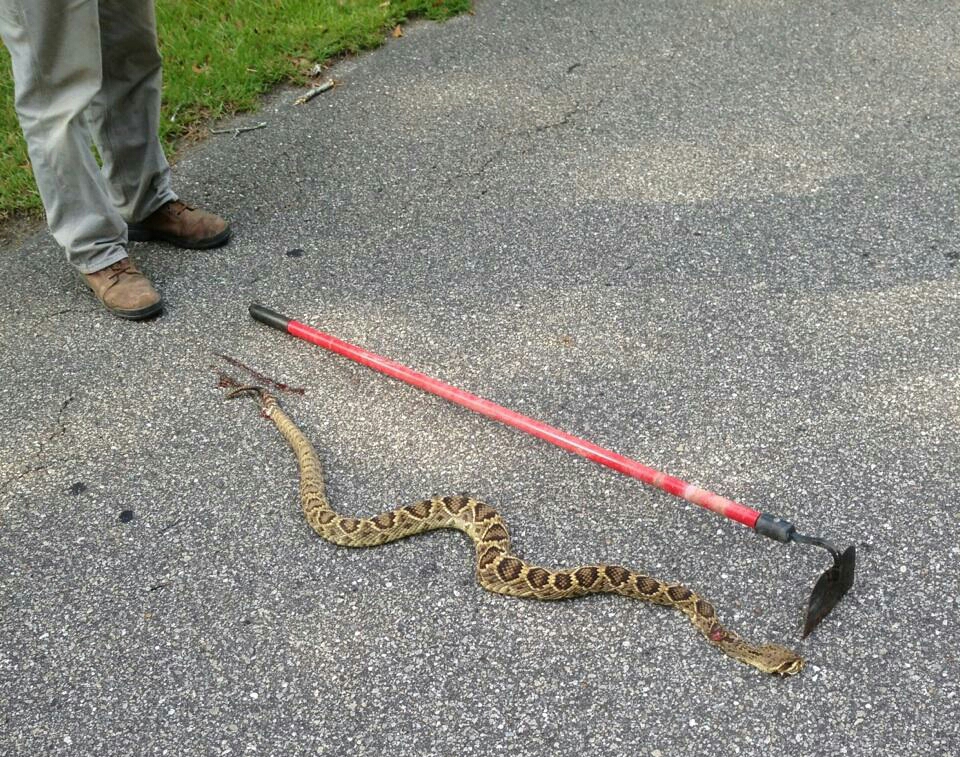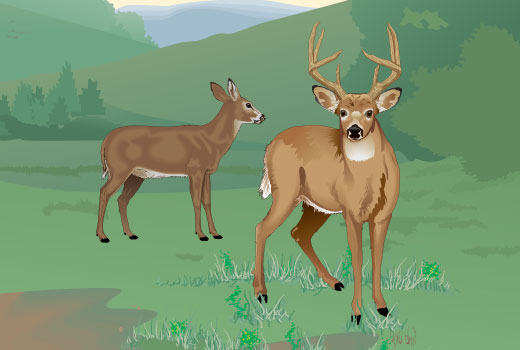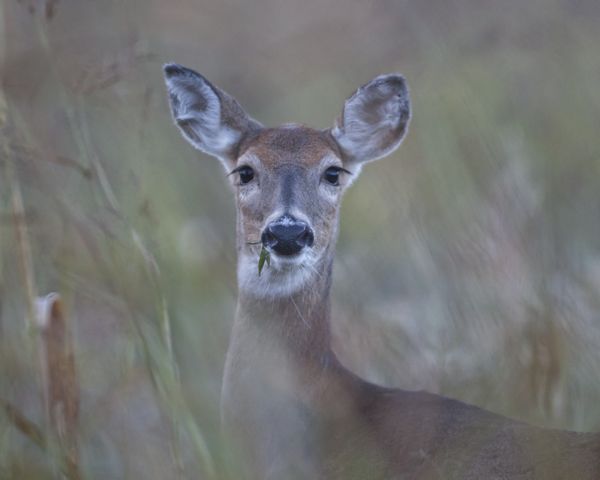
[avatar user=”alkale” align=”left”]Al Kale[/avatar]
The Eastern diamondback rattlesnake is one of the most commonly-sighted, and most formidable, snakes you might come across in Southwest Georgia this time of year.
Pictured below is an approximately five-feet-long rattlesnake that was killed in the River Oaks subdivision off Spring Creek Road in Bainbridge on Tuesday. Dr. Shawn Surratt and Michael Conley killed the snake. Flint Media’s outdoors correspondent, Al Kale, sent in the picture.
According to the Phillip’s Natural World blog, Eastern diamondback rattlesnakes are found throughout Florida, and they range north along the coastal plain, through Georgia, to southeastern North Carolina and west to southern Mississippi and eastern Louisiana. According to the site, Diamondback Rattlesnakes are often found in pine flatwoods, longleaf pine and turkey oak, sand pine scrub areas, and coastal barrier islands. Check out Phillip’s blog for some more up-close pictures of large rattlesnakes, that is, if the sight of snakes doesn’t freak you out.
Rattlesnakes’ natural diet consists of rats and mice, gophers, small birds, frogs, and even the occasional meaty insects, according to the San Diego Zoo. Rattlesnakes have either a rattle or a partial rattle made of interlocking rings, or segments of keratin, the same material our fingernails are made of. When vibrated, the rattle creates a hissing sound that warns off potential predators.
Rattlesnakes are not aggressive and given a choice would rather retreat than strike, according to experts. They warn you by sounding their rattles if you are near them, before they strike.
Ironically, allowing other snakes that are non-venomous, such as gopher and rat snakes, to stay alive in your yard can deter rattlesnakes from going through your property. Rattlesnakes are usually sunning themselves in the warm sun or looking for a place to hide, and their instinct is to avoid contact with humans or large animals that they consider predators.
Visit the Georgia Department of Natural Resources’ website for more information about how to trap unwanted snakes without killing them, and learn how to identify different snakes by their appearance.
You can also learn how to avoid a rattlesnake attack and dress appropriately in the outdoors to protect yourself from an attack.









Be the first to comment